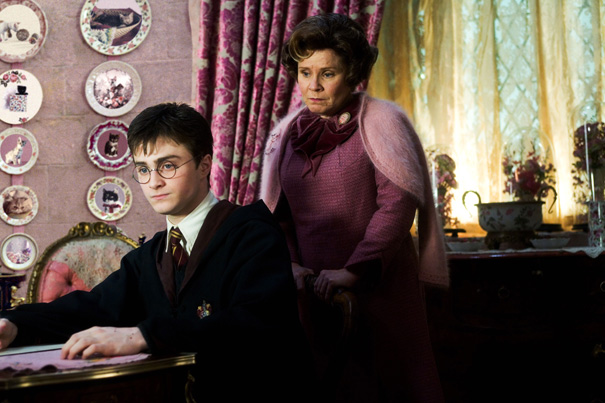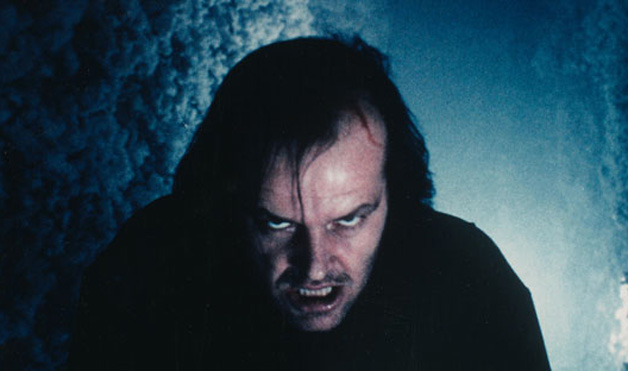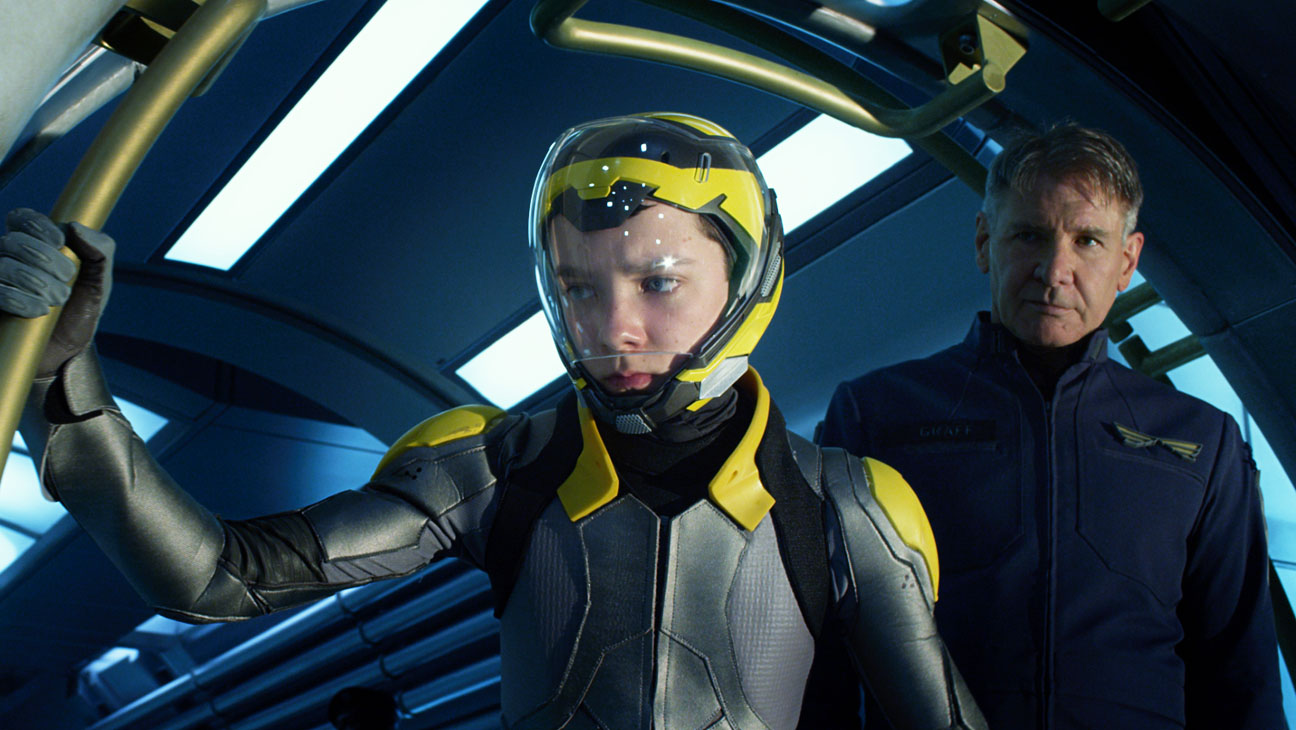4. Harry Potter 5
The book and its meaning: Order of the Phoenix continued Rowling’s successful Harry Potter series by going into more mature territory by exploring Harry’s sexuality and the violence he has to commit throughout the course of his fifth year at Hogwarts. It still is entirely wrapped in the tropes of typical Young Adult fiction, but remains a riveting tale nonetheless.
The movie’s shortcomings: It’s one thing to translate the longest book in the series (870 pages) into the shortest film (138 minutes). It’s another, however, to trim the important parts of the novel in favor of the less-savory ones. Many side characters, including Neville Longbottom and Professor McGonagall, get their own individual stories trimmed in favor of Harry’s. While this may seem like a creative decision, it ultimately limits the world into which the Harry Potter books have strived to create. More importantly than that, though, are the rushed plot details that the shorter script forces to go through that the novel took its sweet time delving into. While the film certainly boasted a powerful cast and dazzling action sequences, it ended up being one of the weaker entries in the franchise.
3. The Shining
The book and its meaning: The Shining is notable in that it confirmed Stephen “the” King’s status as a master of horror and suspense writing. The power of The Shining may indeed come from the fact that it was a very personally driven novel as King himself had spent time alone with his family in a hotel called the Stanley and that there were personal traits of King’s, such as the idea of wanting to hurt his children/past alcoholism, that made their way into the character’s personalities.
The film’s shortcomings: While Stanley Kubrick’s adaptation of the novel is considered a modern day masterpiece by many enthusiastic fans of the horror genre, in actuality it failed to do its source material justice by ignoring the underlying message King had incorporated into the novel; that a good man can be brought down to madness by alcohol. King himself responded negatively to the film, stating that, while it was well made, it wasn’t a good representation of his work. To quote:
“What’s basically wrong with Kubrick’s version of The Shining is that it’s a film by a man who thinks too much and feels too little; and that’s why, for all its virtuoso effects, it never gets you by the throat and hangs on the way real horror should.”
2. Peter Pan (1953)
The book and its meaning: Though he had introduced the influential character of Peter Pan two novels before, it wasn’t until Peter and Wendy that J.M. Barrie’s fantasy world of Neverland became popularized in pop culture. As Peter Pan syndrome has come to symbolize, the primary themes underscoring Peter and Wendy are the conflict between the innocence of childhood and the responsibilities of being an adult. Each is supported with various light and dark factors hinting that dangers will always be present, whether one opts to remain a carefree child or a logical adult.
The film’s shortcomings: A play/novel like Peter Pan never really fit the kid-friendly attitude so often adopted by Disney during its animated film productions. While the film presents the story in a cut-and-dry sense, it also fails to properly act upon the childhood conflict central to Barrie’s story. In the film, Wendy makes very few mentions about wanting to grow up, and ultimately summarizes her feelings in a single song that feels more thrown in than gradually worked up towards. Several of the darker fantasy elements are also cut out, such as Hook being fed to the crocodile by Pan and Tinker Bell getting poisoned. The end result finds its way to an uncomfortable spot between a mature adaptation and a kiddie film.
1. Ender’s Game
The book and its meaning: Nearly every American should be familiar with Orson Scott Card’s novel Ender’s Game; a military science fiction about a boy put through various war games to test his tactical genius. This conflict of reality and simulation serves as the backbone of the novel, while the other ideas of compassion vs. ruthlessness and what it means to be human make up the remainder of it. It’s for these various reasons that Ender’s Game has become suggested reading for various United States military corps.
The film’s shortcomings: A book as popular as Ender’s Game was bound to get a movie, and finally did in 2013, starring Asa Butterfield in the title role. Unfortunately, too many liberties are taken that prevent the film from being as revolutionary as its source. Most notable is that many characters, particularly Ender, are lightened up from their literature counterpart and presented as more definitively good rather than leaning that way from a confusing, moral compass. This harms the whole fight between compassion and ruthlessness as there is no major violence for the ruthlessness aspect to be presented from. It’s still a good adaptation of the book, but not as deep and complex as true fans would want it to be.
Author Bio: Red Stewart is big fan of the entertainment industry, with insights into film, television, and video games for starters. Despite growing up in the 21st century’s era of modernization, he prefers many retro era ideas over the current trends found in many of today’s media. Personally he’s an introvert who loves reading as much as gaming.



